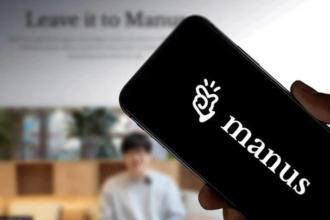Let’s take a moment to journey back three decades. Picture a world where the first word processors and spreadsheets were introduced, heralding a looming productivity revolution. At that time, experts predicted we would have a lot more leisure time, promising that we’d spend less time on writing, calculations, and presentations.
Fast forward 30 years, and it’s clear that these predictions didn’t exactly hold up. Instead of freeing up time, we are just producing longer documents and more intricate presentations. As a consultant, I’ve seen PowerPoint decks evolve from six slides to a staggering 50. The reality is, we engage in much more complex decision-making as data has exponentially increased.
Today, we stand at the brink of another significant shift with the rise of generative AI. This innovation is set to embed itself into the core functions of our organizations, fundamentally changing the way we work. The pressing question now for many, particularly marketers like myself, is how we can effectively seize this productivity opportunity. Marketing, traditionally known for its creative flair, must embrace this evolution; the productivity impact on our field is projected to be as high as 50 percent.
Table of Contents
ToggleThe Transformation of Marketing
Marketing has always tapped into the emotional needs of consumers, crafting perfect products and messages tailored to resonate deeply. Over the past 15 years, digital marketing has shifted this landscape, introducing specialized skills like marketing technology.
Now, generative AI is set to revolutionize marketing practices by drastically improving the right-brain capabilities of marketers. A recent study by the Boston Consulting Group and Harvard showed that tools like ChatGPT can already enhance performance by 40 percent. Just imagine the potential of these tools in a year or two!
So, what will marketers do with this newfound time? Will we enjoy more leisure time, such as yoga and family gatherings? Or will companies simply cut down on their marketing teams? The answer lies somewhere in between; I believe if we don’t actively steer this productivity revolution, marketers will channel their time into generating more ideas and creating more content.
This can lead to more personalized marketing campaigns, tailoring messages and products to fit consumers’ precise interests. Picture receiving emails from your favorite brand, filled with imagery and content that speaks directly to you, creating a unique experience powered by AI.
The Double-Edged Sword of Content
However, there is a dark side to this abundance of content: content overload. Many consumers today feel overwhelmed by repetitive marketing messages. Imagine a scenario where this explosion of content becomes mundane, all echoing similar themes—this is a precarious risk posed by generative AI, which tends to reduce the divergence of marketing outcomes due to its dependency on existing data and content.
The solution? Marketers—and indeed all sectors touched by this productivity revolution—must cultivate a balance between leveraging AI and nourishing the innate creativity within their teams. This involves strategically reskilling and reorganizing talent, embedding predictive AI tools in all facets of decision-making. For instance, creating teams composed of marketing data scientists and engineers who can build solutions that assist fellow marketers in predicting outcomes and understanding consumer behavior at a deeper level can be a game changer.
Case Study: Cultivating a Left-AI Brain
Recently, I collaborated with a consumer goods company aimed at cultivating a “left-AI brain” advantage. Together, we established tools that permeated every level of the organization, empowering marketers to predict sales outcomes and analyze how consumer behaviors shifted across various channels. This effort fostered a culture of feedback within the organization, ultimately leading to more insightful and impactful marketing strategies.
However, it’s not just about building teams and tools. Many organizations fall into the trap of relying solely on their current internal content and data, risking stagnation in their growth. If a brand excels with millennials but has no data regarding Gen Z, they may grapple with reaching that emerging demographic. Instead, tap into external data sources—perhaps by collaborating with financial institutions or other industries—to glean insights that drive innovative strategies and broaden market reach.
Balancing Right and Left Brains
Once organizations effectively harness data and develop new skills to create a left-AI brain, another challenge emerges: preserving brand identity. Companies that overly rely on generative AI risk homogenization, where unique brand voices and ideas dissolve into a melodious blur of sameness.
Studies indicate that when individuals depend too heavily on generative AI, the variance in ideas can plummet by up to 40 percent. This dramatic decrease stifles true innovation, which is vital for any successful marketing strategy.
How can companies navigate this challenge? Identifying, reskilling, and protecting the true creative talent within the organization is crucial. These are the individuals who frequently counter ideas, pushing for innovation and fresh perspectives. By equipping them to utilize AI effectively without letting it replace their original thoughts, organizations can maintain a divergent and unique brand identity.
Your Path Forward
As a marketer, assessing where your strengths lie is essential. Are you creatively inclined, brimming with innovative ideas? Cultivating that talent will make it your superpower in the age of AI. If your skillset leans toward data analysis and rationality, consider specializing. Invest in developing predictive AI competencies to complement your innate abilities.
In this changing world of marketing driven by AI, a clear path emerges: every marketer must actively choose their brain. Embrace the technology while safeguarding the human touch that fuels true creativity and brand distinction.
FAQ
- What is the impact of generative AI on marketing? Generative AI is transforming the core activities in marketing by increasing productivity significantly, with studies indicating potential boosts of 40% to the creative processes of marketers.
- How can marketers adapt to the changes brought by AI? Marketers need to reskill and reorganize to incorporate predictive AI tools, build teams of data scientists, and strategically leverage their emotional intelligence alongside analytical skills.
- What risks accompany the integration of AI in marketing? Over-reliance on AI can lead to content overload and a stifling of creativity, potentially homogenizing marketing messages and diluting brand identity.
- What should marketers focus on moving forward? Marketers should identify their strengths—whether in creativity or data—and choose to either cultivate their artistic talents or specialize in analytical skills to thrive in the age of AI.





